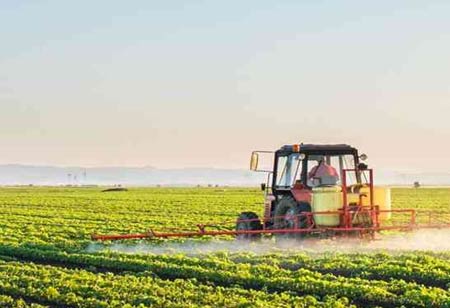THANK YOU FOR SUBSCRIBING
Be first to read the latest tech news, Industry Leader's Insights, and CIO interviews of medium and large enterprises exclusively from Food and Beverage Tech Review
How IoT Revamps Agribusiness
There are many ways IoT technology can help farmers increase their farm’s performance and revenue.

By
Food and Beverages Tech Review | Wednesday, May 26, 2021
Stay ahead of the industry with exclusive feature stories on the top companies, expert insights and the latest news delivered straight to your inbox. Subscribe today.
There are many ways IoT technology can help farmers increase their farm’s performance and revenue.
FREMONT, CA: With the increasing adoption of the Internet of Things (IoT), connected devices have penetrated every aspect of life, from health and fitness, home automation, automotive and logistics, to smart cities and industrial IoT. Farming has seen several technological transformations in the last few years, becoming more industrialized and technology-driven. By leveraging several smart agriculture gadgets, farmers have attained better control over growing crops, making it more predictable and improving their efficiency. Here is an exploration of IoT use cases in agriculture.
Check Out: Agri Business Review
 Smart agriculture is mostly used to denote the application of IoT solutions in agriculture. By leveraging IoT sensors to gather environmental and machine metrics, farmers can make informed decisions and enhance just about every aspect of their work – from livestock to crop farming. By using smart sensors to monitor the crops, farmers can find exactly how pesticides and fertilizers they have to utilize to reach optimal efficiency. This applies to the smart farming definition.
Smart agriculture is mostly used to denote the application of IoT solutions in agriculture. By leveraging IoT sensors to gather environmental and machine metrics, farmers can make informed decisions and enhance just about every aspect of their work – from livestock to crop farming. By using smart sensors to monitor the crops, farmers can find exactly how pesticides and fertilizers they have to utilize to reach optimal efficiency. This applies to the smart farming definition.
Technologies and IoT can transform agriculture in many aspects. Data is gathered by smart agriculture sensors, e.g., weather conditions, soil quality, crop growth progress, or cattle’s health. This data can be leveraged to track the state of agribusiness in general and staff performance, equipment efficiency, and many more. The potential to foresee the output of the production allows farmers to plan for better product distribution. If farmers know exactly how many crops they are going to harvest, they can make sure their product won’t lie around unsold.
The most popular smart agriculture gadgets are weather stations, coupling various smart farming sensors. Located across the field, they gather various data from the environment and send it to the cloud. The provided measurements can be leveraged to map the climate conditions, select the appropriate crops, and take the needed measures to improve their capacity. Farmers use manual intervention to control the greenhouse environment. IoT sensors allow them to get accurate real-time data on greenhouse conditions, including lighting, temperature, soil condition, and humidity.
I agree We use cookies on this website to enhance your user experience. By clicking any link on this page you are giving your consent for us to set cookies. More info


However, if you would like to share the information in this article, you may use the link below:
https://www.fbtechrevieweurope.com/news/how-iot-revamps-agribusiness-nwid-876.html





